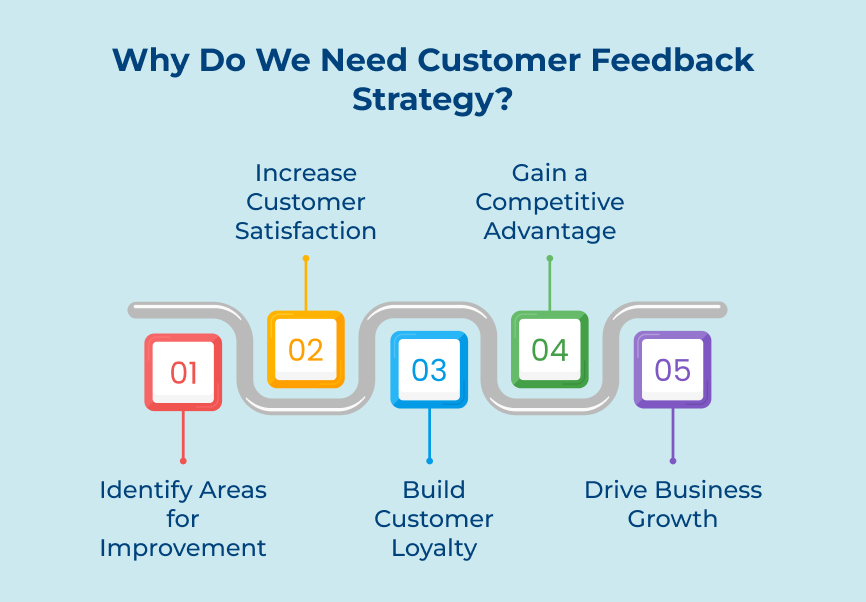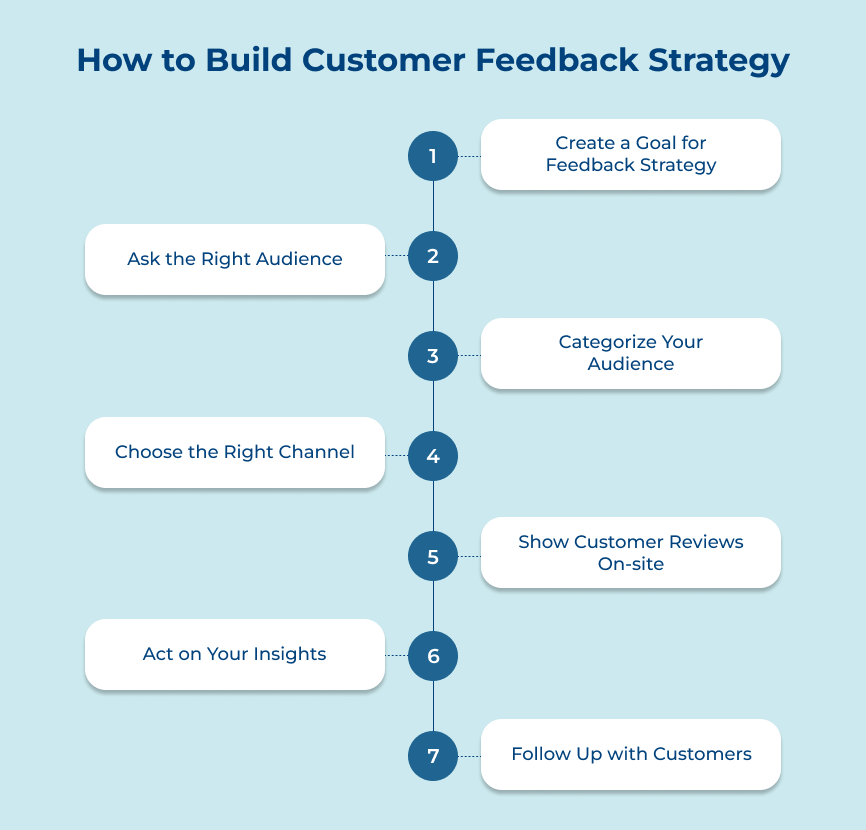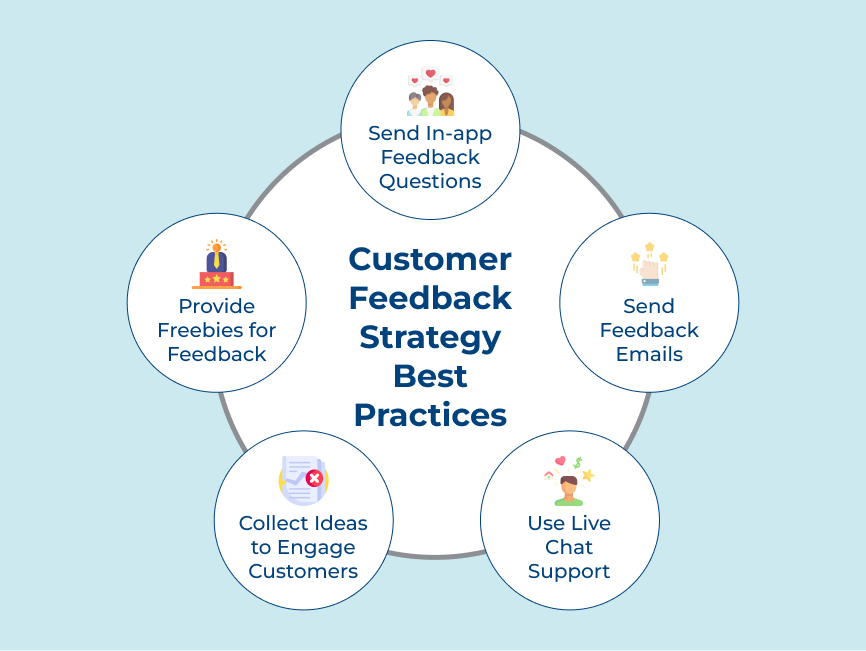The A.C.A.F feedback loop (Ask, Capture, Analyze and Feedback) emphasizes asking for feedback from the right audience. It is the initial step that sets the foundation for the entire process. You can tailor your questions to gather relevant feedback by targeting a specific group of customers. Let’s consider that a software company asks for feedback from its premium users to understand how they can improve their subscription plans and enhance user experience.
Pro tips:
- Use targeted surveys or questionnaires to gather positive feedback.
- Utilize multiple channels (email, social media, website) to reach different segments of your audience.
- Offer incentives or rewards for customers who provide feedback to encourage participation.
3. Categorize Your Audience
Categorizing customer feedback is a crucial step in building a comprehensive consumer feedback strategy. Businesses can easily identify patterns in customer sentiments by categorizing feedback. It allows them to make informed decisions and improvements to their products or services. The step is an essential part of the A.C.A.F feedback loop (Analyze, Categorize, Act, Follow-up).
Let’s assume that a business categorizing feedback may notice a pattern of complaints regarding slow response times from customer service. The insight can help the business prioritize improving its customer service response times to enhance the customer experience.
Pro tips:
- Use a consistent set of categories to ensure accurate and meaningful data analysis.
- Utilize customer feedback tools or software to streamline the categorization process.
- Regularly review and update your categorization system to adapt to changing customer needs.
4. Choose the Right Channel for Collecting Feedback
When it comes to building a successful feedback strategy, choosing the right channel for collecting feedback is a crucial step. The step involves selecting the mediums through which you will gather feedback from your customers. It can include online surveys, social media, email, or in-person interactions.
Selecting the appropriate channel is important because it determines the convenience for your customers to provide feedback. Imagine a scenario where a company decides to use outdated methods like paper surveys to collect feedback from its tech-savvy customer base. The approach would likely result in low response rates and potentially outdated or inaccurate feedback.
Pro tips:
- Understand where your customers spend their time and choose channels that align with their preferences.
- Offer a variety of options for feedback collection to cater to different customer preferences.
- Regularly review feedback data from different channels to identify trends and areas for improvement in your client feedback strategy.
5. Show Customer Reviews On-site and Do Online Research
Customer feedback is an essential component of any successful business, as it provides valuable insights for improving products and services. One crucial step in building a comprehensive feedback strategy is to show customer reviews on-site and conduct online research. Displaying customer reviews on your website helps build trust and credibility with potential customers.
Let’s assume that a clothing company could display testimonials from happy customers on their website, showcasing the quality and fit of their products. They could also monitor social media for mentions of their brand and engage with customers to address any concerns.
Pro tips:
- Consider implementing a review widget on your website to showcase real-time customer feedback.
- Respond promptly to positive and negative reviews, showing customers that their opinions are valued.
- Use online tools to analyze customer sentiment, allowing you to identify trends and make data-driven decisions for improvement.
6. Act on Your Insights
When building a consumer feedback strategy, one crucial step is to act on your insights. It involves analyzing feedback and taking actionable steps to improve their experience. Acting on insights is important because it shows customers that their feedback is valued. Businesses can enhance customer loyalty and success by making changes based on customer feedback.
Let’s consider that customers consistently provide feedback about long wait times at a restaurant. The business can act on the insight by implementing a reservation system to reduce wait times. The approach can lead to a better dining experience for customers and result in higher retention.
Pro tips:
- Focus on the feedback that will have the greatest positive impact on the customer experience.
- Keep customers informed about the changes being made based on their feedback to show transparency and build trust.
- Monitor the outcomes of the changes implemented and gather feedback to ensure that improvements are meeting customer needs.
7. Follow Up with Customers
Follow-up with customers plays a crucial role in building a successful client feedback strategy. After a customer has made a purchase, it is important to reach out to them to gather feedback. The step allows you to understand their experience and identify improvement areas. It helps to build a strong relationship with your customers.
An example of following up with customers could be sending them a personalized email thanking them for their business and asking for their feedback. The simple gesture shows customers that their opinions are valued and encourages them to share their thoughts.
Pro tips:
- Reach out to customers shortly after their interaction with your business to ensure that their experience is fresh in their minds.
- Use the customer’s name and reference the specific product or service they purchased to show that you value their individual experience.
- Consider offering discounts or promotions to customers who provide feedback as a way to show appreciation for their time and input.
5 Customer Feedback Strategy Examples
Below are the powerful examples of customer feedback strategies that can help your business not only meet but exceed customer expectations.

















